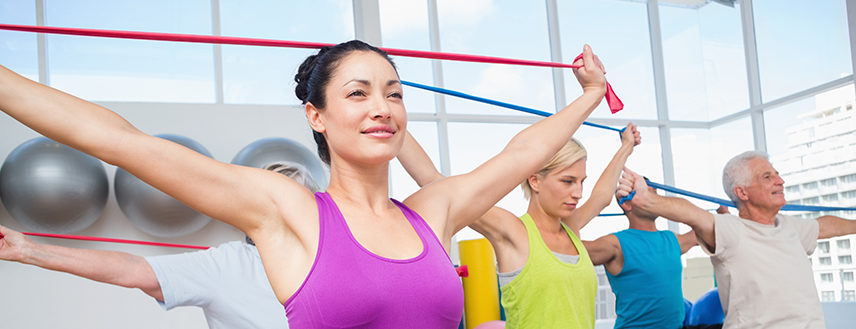
If you avoid regular exercise due to joint pain, you could be doing more harm than good. Routine exercise can help ease joint pain, according to the Centers for Disease Control and Prevention (CDC). Numerous studies have found that people who exercise regularly have improved daily function, decreased depression and fatigue, reduced pain, and improved sleep.
A review published in the Cochrane Database of Systematic Reviews looked at multiple studies that covered the effect of physical exercise on chronic pain and found evidence suggesting positive effects overall. There’s little downside to exercise, the researchers concluded, and the valuable benefits of staying active include improved physical function, less severity of pain in joints and other areas, and improvements in quality of life.
If you suffer from joint pain, try these four exercises:
- Strength Training – If you suffer from joint pain, certain triggers can makeyour symptoms worse. But the stronger your muscles are, the less strain there is on your joints. Basic weight lifting and strength training is a great way to get stronger and boost muscle mass. A study published in Musculoskeletal Care found that progressively more intensive resistance training over the course of six weeks improved outcomes for people with arthritis. Experiment with weight machines, free weights, and resistance bands. Start slowly and increase your intensity gradually.
- Walking – It’s free, you can do it almost anywhere, no special training is needed, and it’s easy on sore A small trial published in the journalMusculoskeletal Care found that people assigned to a walking regimen of three to four times a week generally had improved feelings of well-being and self-efficacy, while people in the control group did not. Other benefits of walking include weight loss, which in turn is helpful for easing stress and pain in the joints. It also promotes heart health.
- Swimming – Being in the water is a great place to stretch your muscles and soothe your joints, so hit the pool for an aerobic workout. Swim laps or try a water aerobics class. A study published in theAmerican Journal of Physical Medicine & Rehabilitation found that 16 weeks of water-based exercises in women with rheumatoid arthritis led to significant improvements in joint and other pain, as well as lowered disease activity, when compared to the effectiveness of land-based aerobic exercises.
- Yoga and Tai Chi – When a joint and its surrounding muscles are affected by arthritis, the result is often impaired coordination, position awareness, balance, and an increased risk of falling, which is why people complain of their ‘knees giving out’ with activity. Yoga and tai chi are examples of exercises that improve body awareness, which can increase coordination and balance, a sense of where joints are positioned and relaxation. Plus, they include flexibility and range-of-motion moves, which boost joint flexibility and joint function, according to the CDC. Balance exercises like walking backwards and standing on one foot are also valuable for boosting balance and avoiding falls.

Leave a Reply